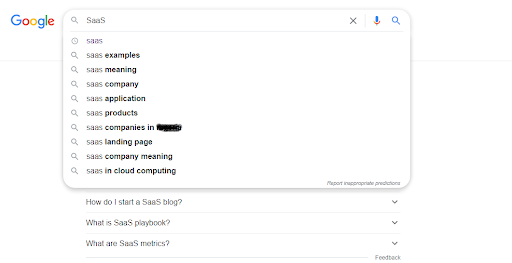To start, forget the several confusing templates online for writing blog posts. In reality, blog post writing is straightforward.
So, don't hurt yourself with "your titles must be 60 characters long," "the introduction must be a maximum of 100 words," or "statistics must be included in the second paragraph." At least, not yet!
Instead, learn how to write a blog post from the ground up. See the entire process as fun because that is what it is.
And fortunately, this ultimate guide can help you.
In this article, we shall walk you through the practical steps of writing compelling blog posts, even as a beginner. And if you're already an expert blogger, the tips here can further fine-tune your articles.

How To Write A Blog Post In 10 Simple Steps
Follow Other Established Blogs And Bloggers
Before you even start writing a word, know what makes good content.
Most importantly, find and follow established blogs and bloggers (in your preferred niche). A quick search on Google can give you closure.
Type "blogger" + "niche"
E.g. "blogger" "SaaS"

Now, read through the blog posts of 2-5 of your favorites. You can even go ahead and subscribe to the newsletter of the best blog/blogger.
Note: as you read through the blog posts, study their structure, use of words, tone, and the flow.
Outside the bloggers in your niche, check the bigshots of blogging. Examples of such figures include Jon Morrow and Henneke Duistermaat.
If Jon and Henneke seem far-fetched, how about the bloggers on Legiit? BTW, do you know that over 90% of the posts on the Legiit blog are written by Legiit writers?
Key takeaway: you eventually become what you consume. So, find 2-3 bloggers that interest you; follow their posts and learn from them.
Research The Tools Needed For Blog Writing
This part might seem pretty basic. However, if you're a beginner, you should know there is more to blog writing than having a word processor.
Outside Microsoft Word or Google Docs, you will need a few other tools. Here are some of the crucial ones:
- Grammar checker - Grammarly and Hemmingway
- Plagiarism checker - Copyscape and Quetext
- Keyword research - Ahref, AnswerThePublic, and Google Keyword Planner
- On-page optimization - SurferSEO and Fraze
Note: some of the tools are paid. But don't fret; you can still get started with the freemium deals.
For example, a free Grammarly account will suffice for basic grammar correction. Also, Quetext provides up to 3 free searches for new users.
Warning: while tools can smoothen your blog writing skills, don't rely heavily on them.
Now, you have studied how other bloggers write. And you even have the tools to get started. What's the next step?
Find An Interesting Topic
Ideally, we will ask you to blog about anything that comes to your mind. But you can do better; why not write for readers? Why not write for traffic?
And mind you, while writing for traffic and people, you can still have fun. While meeting others' needs, you can find several attention-grabbing blog topics and ideas.
Here are the 3 common ways to find highly-interesting blog topics:
Keyword Research
Keyword research is the most effective method for finding blog topics. It unearths the frequently asked questions.
Plus, keyword research is crucial to search engine optimization. It helps you to be in the right place at the right time.
That said, how do you go about keyword research?
- Input a term related to your niche on the Google search bar
- Check the auto-fill options or scroll down to the related searches

- Now, pick one of the related searches and use Google Keyword Planner to check its search volume. BTW, we chose "SaaS company" for this example.
- Note : to rank your content quickly, choose keywords with low competition.

- Now, take the keyword (with the low search volume) and plug it into AnswerThePublic search bar. You'll get something like this:

- Pick any of the reasonable questions.
Note: keyword research is somewhat technical. It's okay if you find it complex. Fortunately, you outsource the job to Legiit experts.
Google Trends
Google Trends is not entirely different from keyword research. The only thing is that it helps you check the relevance of your topic.
Specifically, Google Trends shows the history and performance of your keyword. As a result, you'll save your strength and only write evergreen blog posts.
Online Forums
Outside keyword research, you can also join niche forums. Just go to your Facebook search bar, and type your niche. Then, join the top 3 groups with the most members.

Now, follow the conversions on the Facebook Groups. What are people asking about? What updates are they discussing?
The beauty of online forums is that you can get new topics with low search competition. Even better, you can establish authority by answering some of the questions in the group.
Choose An Engaging Title For Your Blog Post
The topic generated earlier can also be your blog post title. But we recommend tweaking it further to increase engagement for your readers. How?
- Add numbers - it gives readers an idea of the length of your post.
- Ask questions - questions generally spark curiosity and are the fastest way to gain readers' attention.
- Include hyphens - hyphens (or colons) help put your keywords at the start of your blog title before the questions.
- Consult blog title analyzers - can assist in fine-tuning blog titles for readability and SEO. But again, don't rely heavily on the generators.
That said, we'll recommend Capitalize My Title. It is FREE and straightforward.

Pro tip: you don't have to perfect your blog title before you start writing. Just have a draft and get direction. If possible, find 3-5 alternatives and choose the best one later.
Create An Outline For Your Blog Post
Again, some tools can generate outlines for your blog posts. You only need to input the title.
However, we will advise a beginner to understand the basics. That brings us back to blog post ideas.
Ideally, your blog post idea will automatically give you a structure for your posts. For example, this article is a how-to post. As such, it'll follow a step-by-step outline.
E.g.
Topic: How To Write A Blog Post
- Step 1
- Step 2
- Step 3…
But say you're writing a "what is…" blog post, the outline will be different.
E.g.
Topic: What Is A Blog Post?
Definition
Types of Blog Posts
- Type 1
- Type 2
- Type 3…
Overall, your blog post idea will guide you on the outline to use. But while you're at it, ensure you use clear headings (and subheadings). Also, use several bullet points. Those little details make blog posts easy to read.
Start Writing
At last, the wait is over!
The learning, mimicking, keyword research, and outlining have led you here: your first draft.
And remember, blog writing is not difficult. Just express your views, back them up with research, and deliver your best.
That said, pay attention to these two details while writing your draft:
Point Of View (POV)
POV is how you address the ideas in your post. Will you write from personal experience? Focus on the reader? Or share a neutral view?
The answer depends on your audience, really. But often, we advise bloggers to write from the second-person POV; focus on the reader.
Your Audience
To get the most traffic for your blog post, it must answer the right questions for the right people. For example, if you have noticed, this article focuses on newbie bloggers.
If the focus was on expert bloggers, everything (the topic included) would be different. Instead of "how to write a blog post," we'll look at "how to convert more traffic with your blog post."
Furthermore, we won't tell an expert blogger how to do keyword research or where to find topics. Instead, the content of the post will circle around search engine optimization, formatting, and the use of persuasive words.
So, know your readers. Most importantly, put yourself in their shoes and genuinely help them.
Perfect The Elements Of Your Blog Post
Generally, web content has 3 essential parts:
- Introduction
- Body
- Conclusion
Introduction
When writing your introduction, avoid fluff content and general knowledge. Instead, address the pain points and fears of your audience.After addressing the fears and pain points, transition into how your post will help the readers. If possible, summarize the contents of your article within the introduction.
Body
Unless you're writing an academic post, there is no rule for a perfect blog's body. No one will penalize you if your paragraphs don't contain three sentences.
In fact, you can have one-sentence paragraphs.
As long as you express your points clearly and make your post easy to scan, your readers won't mind.
Most importantly, use simpler words to explain your ideas. And don't leave readers hanging within your post; use transition words to create a flow from one idea to another.
Conclusion
Your conclusion should compel your readers to act. Even if you're not selling a product, you can ask the audience to share feedback or check your next post.
Like the body of blog posts, your conclusion should answer "what next." That's how to create a lasting impression on your audience.
Show Personality
With the advent of several AI content and generators, you can't stop at just providing value with your blog post. Isn't that what everyone is doing?
And if you write like everyone else, how would you stand out?
If all blog posts provide the same value, why should readers stick to your advice over other bloggers? Why should they buy using the link in your article?
To stand out, you must show your personality. You must carve out a style and be consistent with it.
That said, how can you show personality in your blog posts?
- Offer a fresh angle to your research
- Add unique examples to your blog posts
- Write as you talk
Spice Up Your Post
From our experience, visual elements are the best spice for blog posts. So, start with images!
And if you could use custom thumbnails in your blog post, do so. It will further help you stand out. Also, add screenshots (when necessary), infographics, memes, and GIFs.
In addition to images, embed video content within blog posts. While you might not add videos to all your posts, prioritize them for how-to content.
Besides visual content, illustrations (charts) and statistics can make your points stand out. Statistics particularly can add authority to your posts.
Note: when adding statistics to your blog posts, add links to the original study or survey.
Optimize Your Blog Posts For Search Engines
Ultimately, the point of blog posting is to get traffic. But for that to happen, your posts must be seen. In other words, they must be optimized for search engine result pages (SERPs).
In this section, we'll guide you on how to optimize your blog posts for the top 3 search engines.
Indeed, Google regularly updates its ranking algorithm. But with the following tips, you can rank your blog posts despite the changes.
Step 1: Keyword Research
As we earlier stated, keyword research is the best way to get blog topics. And to rank your posts on Google, you must find low competition keywords with high search volume.
Step 2: Keyword Placement
Include keywords in targeted places in your blog posts. Examples include your title and headings.
And as much as possible, let your keywords be at the beginning of your title. So, you might have to use colon and hyphens.
For example, if your keyword is SaaS companies and you want to write about their popularity. Don't choose a title that reads "7 Factors That Contribute To The Popularity Of SaaS Companies." Instead, try "SaaS Companies: 7 Reasons They Are Popular."
Furthermore, don't worry about the number of times your keyword appears in your post. Instead, use it as often as naturally possible.
Most importantly, use your keyword within your introduction.
Step 3: Include Secondary Keywords
Whether you call it secondary, related, or latent semantic indexing (LSI) keyword, the terms mean the same: alternative terms that readers might be interested in.
So, how can you find secondary keywords? More importantly, where should you use them?
Like when we picked a topic, input your primary keyword on Google search bar, and scroll to the bottom of the first page. There, you’ll find "related searches." Use them in your post!

About including LSI keywords, sprinkle them around the body of your blog post. If possible, use them within your subheadings.
Step 4: Increase The Length Of Your Posts
Lengthy posts generally answer more questions. Plus, they can comfortably contain several LSI keywords.
But while increasing the length of your blog post, don't write off searchers' intent. For example, if you are writing a curated post (like top freelancer statistics), don't define unnecessarily terms just to make up the word count.
The reader already knows who a freelancer is; just write about the statistics.
Another way you can increase the length of your posts is to update them. As technology advances, the chances are that there will be new discoveries. So, revisit your post to include the NEW additions.
Step 5: Optimize Your Images
Don't just add images to your blog posts; optimize them for Google. Here is how:
- Rename your featured images, for example, change "x.jpg" to "why-Saas-companies-are-popular.jpg."
- If you are writing a how-to blog post, rename the images (if any) to show the steps explained.
- More importantly, add your company name within the renamed description. E.g: "Legiit-how-to-write-a-blog-post.jpg"
- Lastly, optimize the alt text for a keyword too.
Step 6: Link Out To Other Posts On Your Blog
As a beginner, you might not have published posts yet. In that case, follow this tip for your next articles:
While creating your draft, highlight 2-3 posts related to your current piece. Then, link out to them.
If possible, make your anchor text keyword-optimized too.
E.g.
Instead of "click here to read more info," write "find more information about SaaS companies here."
Step 7: Use An On-page SEO Tool
Your manual tweaks will only get your post "a little" boost on Google search result pages. For thorough optimization, you still need on-page SEO tools like SurferSEO and Fraze.
With SurferSEO or Fraze, you will get suggestions on the keywords to include in your post. And beautifully enough, the "suggested keywords" are not just mere guesses.
On-page SEO tools scrap the high-ranking posts for your keyword. Then, they draw a list of the terms used by your competitor, where, and the frequency.
When you combine the suggestions and the earlier steps in this article, your post will come right on top of the Google search result pages.
BTW, you don't have to use all the suggested terms (of an on-page SEO tool) in your post. Just aim for a 70-80 score.
Bing
Bing is just as POPULAR as Google. But we have to say its ranking algorithm is not as complex. Nevertheless, follow the tips we shared earlier. Then, enforce the following tips:
Use Your Keyword Word For Word
Unlike Google, Bing prefers you use your keyword "as is" within your blog post. In other words, avoid contextual tweaks if you want to rank your article primarily for Bing.
Even at that, ensure you add the keywords that naturally fit within your post. And remember, you don't have to overstuff to rank.
Your Blog Post Must Contain Bing's Pillars Of Quality Content
Bing is very strict with content quality. To them, a quality post must contain:
- The author and a list of references (at the base of the article)
- The layout that separates ads from the original contents of a post
- Answers to the queries of readers
Note: don't add links to your direct competitors when adding references. Always source your ideas and statistics from authority sites.
Outside the "pillars," Bing loves media-rich posts. So, ensure you add enough visual content to your blog post.
Share Your Posts On Social Media
Bing loves it when your blog post gets several social shares. To them, social share means your content is valuable.
So, share links to your published posts on forums. But don't just dump links here and there. Instead, address queries and offer your post as a more robust guide.
Yahoo
If your blog post is optimized for Bing, you don't need to worry about Yahoo. The two search engines have an alliance.
And mind you, the alliance also covers AOL.
Summarily, your on-page SEO for Google, Bing, or Yahoo still requires some technical details. For example, your website should be mobile-friendly and load fast.
If your website's overall SEO is solid, ranking your blog posts for any search engine should be straightforward.
How To Write a Blog Post: Frequently Asked Questions
How do you write a blog post for beginners?
To start, you need a keyword and an outline. Afterward, consider your audience and what's already ranking on SERPs. Then, write something better with a fresh perspective.
Your blog post idea ultimately determines the structure of your content. A review content, for example, will explain the pros and cons of a product. On the other hand, a how-to post will detail the steps to create something.
Regardless of the "blog idea," your post will always contain a title, introduction, body, and conclusion.
What are the 4 main parts of a blog?
The 4 main parts of a blog post are:
- Blog title
- Introduction
- Body
- Conclusion
How To Write a Blog Post: Final Thoughts
As we stated at the beginning of this piece, writing a blog post is straightforward. You only need to identify your readers' search intent and write for that.So, blog writing is not as difficult as you might think. But say you lost your way at any point, you can always revisit this piece.
Plus, we have several articles on the Legiit blog to guide you. Check them out!












 Download
Download